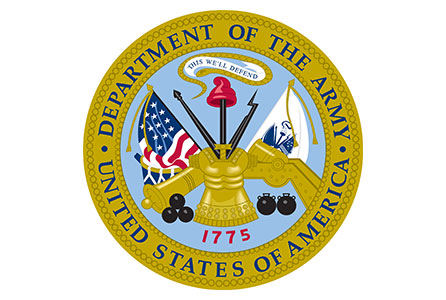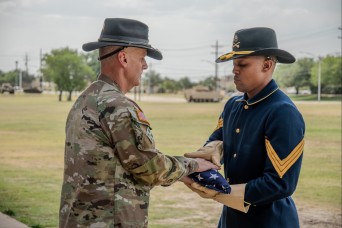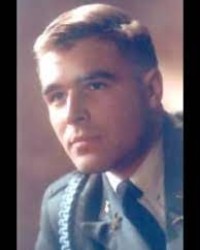Division of Choice
The 1st Cavalry Division—America’s First Team—is more than a unit; it’s a legacy of excellence, innovation, and strength. The First Team is the “Division of Choice” for Soldiers across the Army. Whether it’s world-class training, unmatched esprit de corps, or opportunities for personal and professional growth, the 1st Cavalry Division develops leaders, builds cohesive teams, and accomplishes any mission.
Choose legendary. Choose the First Team. (U.S. Army video by 1st Lt. Tyler Williams)
Mission Statement
On order, 1st Cavalry Division deploys combat-ready forces to deter or defeat our adversaries in support of the Joint Force anywhere in the world.
Who We Are
We are the U.S. Army's premier armored fighting force. Since 1921, we have evolved from horse-mounted cavalry to a modern armored force leading the Army's transformation efforts. Headquartered at Fort Hood, Texas, the division has played key roles in major conflicts including World War II, the Korean War, Vietnam, the First Gulf War and recent global operations. Featuring three armored brigade combat teams, a cavalry regiment, division artillery, air cavalry and sustainment brigade, the Division stands ready to engage and destroy the enemies of the United States.
Pegasus Charge




Pegasus Charge is how 1st Cavalry Division will transform in contact. This is not solely looking for new equipment, we are looking to push the boundaries of how we think, organize, train, and how we operate. We will look across the entire DOTMLPF-P; doctrine, organizational design, experimentation and materiel procurement.
Pegasus Charge is about ensuring 1st Cavalry Division deploys Brigades that are lethal, survivable and maneuverable while having the full weight of the Division to shape the battlefield.
1ABCT "Ironhorse"
1-7 CAV
2-5 CAV
2-8 CAV
2-12 CAV
91st Engineer
115th Support
2ABCT "Blackjack"
4-9 CAV
1-5 CAV
1-8 CAV
1-9 CAV
8th Engineer
15th Support
3ABCT "Greywolf"
6-9 CAV
2-7 CAV
3-8 CAV
1-12 CAV
3rd Engineer
215th Support
3rd Cavalry Regiment "Brave Rifles"
1-3 CAV
2-3 CAV
3-3 CAV
3rd CAV Artillery
3rd CAV Support
Air CAV
7-17 Attack
1-227 Attack
2-227
3-227
615th Support
1st CAV Sustainment Brigade "Wagonmasters"
1CD STB
553rd DSSB
Division Artillery "Red Team"
6-56 ADA
1-82 FA
3-16 FA
2-82 FA
-
 1st Cavalry Division Chef of the Year competition
September 19, 2025
1st Cavalry Division Chef of the Year competition
September 19, 2025
-
 1st Cavalry Division Celebrates 104 Years of history and legacy
September 8, 2025
1st Cavalry Division Celebrates 104 Years of history and legacy
September 8, 2025
-
 1st Cavalry Division looks forward to the new school year
August 7, 2025
1st Cavalry Division looks forward to the new school year
August 7, 2025
-
 1st Cavalry Division conducts retreat ceremony
July 9, 2025
1st Cavalry Division conducts retreat ceremony
July 9, 2025
-
 Ironhorse Welcomes New Brigade Commander
June 18, 2025
Ironhorse Welcomes New Brigade Commander
June 18, 2025
-
 New training concept aims to revolutionize Army gunnery
June 5, 2025
New training concept aims to revolutionize Army gunnery
June 5, 2025
-
 3d Cavalry Regiment conducts Change of Command Ceremony
June 5, 2025
3d Cavalry Regiment conducts Change of Command Ceremony
June 5, 2025
-
 First Team conducts Retreat Ceremony
June 4, 2025
First Team conducts Retreat Ceremony
June 4, 2025
-
 The First Team Troopers Complete the 1st Cavalry Division Best Squad Competition
June 4, 2025
The First Team Troopers Complete the 1st Cavalry Division Best Squad Competition
June 4, 2025
-
 Ironhorse “Charges” Forward with Transforming in Contact
April 30, 2025
Ironhorse “Charges” Forward with Transforming in Contact
April 30, 2025
-
 First Team Trooper Runs In Boston Marathon
April 11, 2025
First Team Trooper Runs In Boston Marathon
April 11, 2025
-
 1st Cavalry Division Uncasing Ceremony
March 27, 2025
1st Cavalry Division Uncasing Ceremony
March 27, 2025
-
 Maj. Gen. Thomas M. Feltey
February 28, 2025
Maj. Gen. Thomas M. Feltey
February 28, 2025
-
 Historic US, Poland cavalry divisions train together at Exercise Combined Resolve
February 12, 2025
Historic US, Poland cavalry divisions train together at Exercise Combined Resolve
February 12, 2025
-
 80 Years Later: 1st Cavalry Division returns to the Philippines to commemorate the Battle of Manila
February 7, 2025
80 Years Later: 1st Cavalry Division returns to the Philippines to commemorate the Battle of Manila
February 7, 2025
-
 Sgt. Maj. of the Army Michael R. Weimer visits regionally aligned forces on the Eastern flank of Europe
February 7, 2025
Sgt. Maj. of the Army Michael R. Weimer visits regionally aligned forces on the Eastern flank of Europe
February 7, 2025
-
 From Fort Cavazos to Pasadena: 1CD HCD Rides in Rose Parade
January 2, 2025
From Fort Cavazos to Pasadena: 1CD HCD Rides in Rose Parade
January 2, 2025
-
 1st Cavalry Division visits Polish school, shares holiday traditions
December 20, 2024
1st Cavalry Division visits Polish school, shares holiday traditions
December 20, 2024
-
 US Army Civil Affairs Soldiers join Lithuanian Armed Forces in Confidence 2024 Exercise
December 19, 2024
US Army Civil Affairs Soldiers join Lithuanian Armed Forces in Confidence 2024 Exercise
December 19, 2024
-
 Cavalry Carols
December 17, 2024
Cavalry Carols
December 17, 2024
-
 1st Cav Conducts Battle Staff Training in Romania
December 9, 2024
1st Cav Conducts Battle Staff Training in Romania
December 9, 2024
-
 The 1st Armored Division’s Bulldog Brigade Assumes Authority from Task Force Iron in Poland
December 3, 2024
The 1st Armored Division’s Bulldog Brigade Assumes Authority from Task Force Iron in Poland
December 3, 2024
-
 Exercise Dynamic Front 25
November 25, 2024
Exercise Dynamic Front 25
November 25, 2024
-
 Branch Day: A Key Decision for Future Leaders at UT Arlington
October 29, 2024
Branch Day: A Key Decision for Future Leaders at UT Arlington
October 29, 2024
-
 1st Cavalry Division invited to participate at E3B qualifications in Poland
October 21, 2024
1st Cavalry Division invited to participate at E3B qualifications in Poland
October 21, 2024
IN OTHER ARMY NEWS!
-
 Fort Knox Army 250th history — who was Jacob L. Devers?
October 1, 2025
Fort Knox Army 250th history — who was Jacob L. Devers?
October 1, 2025
-
 SDDC changes name to U.S. Army Transportation Command
September 29, 2025
SDDC changes name to U.S. Army Transportation Command
September 29, 2025
-
 Fun traditions: Oktoberfest spirit brings families together at Fort Hood
September 26, 2025
Fun traditions: Oktoberfest spirit brings families together at Fort Hood
September 26, 2025
-
 Tulsa District awards construction contract to Lawton company
September 26, 2025
Tulsa District awards construction contract to Lawton company
September 26, 2025
-
 Tobyhanna delivers critical communication support for Army aviators
September 24, 2025
Tobyhanna delivers critical communication support for Army aviators
September 24, 2025
-
 New Army hazardous material tracking system provides cradle-to-grave management capabilities
September 22, 2025
New Army hazardous material tracking system provides cradle-to-grave management capabilities
September 22, 2025
-
 1st Cavalry Division Chef of the Year competition
September 19, 2025
1st Cavalry Division Chef of the Year competition
September 19, 2025
-
 Fight Night returns to ring bigger, better at Fort Hood
September 18, 2025
Fight Night returns to ring bigger, better at Fort Hood
September 18, 2025
-
 On target, on course: Fort Hood MWR, BOSS teach Soldiers useful life skills
September 18, 2025
On target, on course: Fort Hood MWR, BOSS teach Soldiers useful life skills
September 18, 2025
-
 Civilian to Soldier: RTC Flight Test Engineer Joins the Army
September 16, 2025
Civilian to Soldier: RTC Flight Test Engineer Joins the Army
September 16, 2025
-
 Army armored brigade combat team builds transformation from solid foundation
September 15, 2025
Army armored brigade combat team builds transformation from solid foundation
September 15, 2025
-
 Army MP Saves Infant in Medical Emergency
September 12, 2025
Army MP Saves Infant in Medical Emergency
September 12, 2025
-
 VIDEO: Fort Knox honors 9/11 victims during annual Patriot Day ceremony
September 11, 2025
VIDEO: Fort Knox honors 9/11 victims during annual Patriot Day ceremony
September 11, 2025
-
 VIDEO: World War II-era PT test drives friendly competition at Fort Knox
September 8, 2025
VIDEO: World War II-era PT test drives friendly competition at Fort Knox
September 8, 2025
-
 Over 100 Bradleys from 405th AFSB, TLSC-E issued to Cavalry Soldiers for Poland rotation
September 8, 2025
Over 100 Bradleys from 405th AFSB, TLSC-E issued to Cavalry Soldiers for Poland rotation
September 8, 2025
-
 Fort Irwin breaks ground on first-of-its-kind privatized apartments for junior enlisted Soldiers
September 5, 2025
Fort Irwin breaks ground on first-of-its-kind privatized apartments for junior enlisted Soldiers
September 5, 2025
-
 VIDEO: A day in the life: Fort Knox Range Operations
September 5, 2025
VIDEO: A day in the life: Fort Knox Range Operations
September 5, 2025
-
 Fort Knox to host 2025 Oktoberfest celebration Sept. 19
August 29, 2025
Fort Knox to host 2025 Oktoberfest celebration Sept. 19
August 29, 2025
-
 The Power of Partnership: Turning Challenges into Capabilities - U.S. Army Aberdeen Test Center Perryman Wash Rack
August 28, 2025
The Power of Partnership: Turning Challenges into Capabilities - U.S. Army Aberdeen Test Center Perryman Wash Rack
August 28, 2025
-
 Fort Bliss tests Integrated Defense in post-wide exercise
August 28, 2025
Fort Bliss tests Integrated Defense in post-wide exercise
August 28, 2025
-
 Annual Patriot Day ceremony returns to veterans cemetery Sept. 11
August 27, 2025
Annual Patriot Day ceremony returns to veterans cemetery Sept. 11
August 27, 2025
Yellow Book (May 2025)
-
 (May 2025)Yellow Book
(May 2025)Yellow Book
1st Cavalry Division, America's First Team!
The saga of the 1st Cavalry Division weaves a vibrant tapestry of valor, beginning in the dusty deserts of Fort Bliss, Texas, where it was born on September 13, 1921. Here, Troopers on horseback galloped across rugged terrain, guarding the Mexican border with steely resolve. As the 1940s dawned, the march of technology retired their trusty steeds, transforming them into dismounted cavalry ready to face the trials of World War II’s Pacific Theater.
In 1943, the division sailed to Queensland, Australia, honing their skills for jungle and amphibious warfare. By February 1944, they charged the beaches of Los Negros Island, clashing fiercely with Japanese forces and leaving 7,000 enemy casualties in their wake. Months later, on the Philippine island of Leyte, they battled through dense jungles, and in 1945, their “Flying Column” thundered into Manila, liberating internees at Santo Tomas University. Two Troopers earned the Medal of Honor posthumously, their sacrifices etched into the division’s lore. Under Major General William C. Chase, the “First Team” moniker took root, and they rode into history as the first to enter Tokyo, securing Japan’s capital during the occupation and patrolling 5,000 square miles while aiding in disaster relief and demobilization.
When North Korea invaded South Korea in 1950, the First Team answered the call, storming ashore at Pohang Dong in a daring amphibious landing. They surged across the 38th parallel, capturing Pyongyang, only to face a relentless Chinese counteroffensive at Unsan that tested their grit. Despite heavy losses, they fought on, holding the line. Eleven Troopers earned the Medal of Honor, their courage never forgotten.
Reborn as an airmobile force, the division soared into Vietnam. During the 1965 Pleiku Campaign, they earned the Presidential Unit Citation, and in 1968, they shattered the Tet Offensive in Hue and relieving the besieged Marines at Khe Sanh and striking into Cambodia in 1970. Thirty Troopers received the Medal of Honor, their bravery a testament to the “Sky Troopers’” indomitable spirit. The division was the first full unit into Vietnam and the last to leave, returning to Fort Hood in 1971 as a “Tricap” Division blending armor, air mobility, and cavalry.
Through the Cold War, the First Team sharpened their skills at Fort Hood, training for global conflict and facing mock battles at Fort Irwin. When Iraq invaded Kuwait in 1990, they deployed to Saudi Arabia, outwitting the enemy with a deceptive feint along the Wadi al Batin. In a breathtaking 24-hour, 300-kilometer charge, they smashed through the Republican Guard, fulfilling General Schwarzkopf’s command to “send in the First Team” and end the Gulf War.
In 1998, the division deployed to Bosnia, ensuring stability following years of brutal conflict in the region. By 2003, they were in Iraq, liberating a nation and guiding Baghdad toward democracy in 2004. They returned in 2006 and 2009, commanding vast forces and transferring bases to Iraqi control. In Afghanistan, from 2011 to 2016, they led Regional Command-East and trained Afghan forces, their colors unfurled in Bagram as a symbol of enduring strength.
Recently, the First Team deployed brigades to Iraq to support the fight against ISIS, Korea to reassure our allies, and Europe, to counter Russian aggression in 2014 and bolstering NATO allies in 2022. Now, the Division stands ready to Transform in Contact, setting us up to fight and win on the modern battlefield. With 24,000 Soldiers carrying the hard-riding spirit of the cavalry, the 1st Cavalry Division stands ready, their legacy a saga of courage, adaptability, and triumph, forever the “First Team.”
First Team's Medal of Honor Recipients
-
 Vietnam WarCPT Jon E. Swanson
Vietnam WarCPT Jon E. Swanson -
 Vietnam WarSGT Peter C. Lemon
Vietnam WarSGT Peter C. Lemon -
 Vietnam WarSPC4 John P. Baca
Vietnam WarSPC4 John P. Baca -
 Vietnam War2LT Robert R. Leisy
Vietnam War2LT Robert R. Leisy -
 Vietnam WarSGT Donald S. Skidgel
Vietnam WarSGT Donald S. Skidgel -
 Vietnam WarSPC4 Leonard L. Avarado
Vietnam WarSPC4 Leonard L. Avarado -
 Vietnam WarSGT Rodney J. Evans
Vietnam WarSGT Rodney J. Evans -
 Vietnam War1LT Robert L. Poxon
Vietnam War1LT Robert L. Poxon -
 Vietnam WarSPC4 Jesus S. Duran
Vietnam WarSPC4 Jesus S. Duran -
 Vietnam WarSPC4 Donald R. Johnson
Vietnam WarSPC4 Donald R. Johnson -
 Vietnam WarSGT John N. Holcomb
Vietnam WarSGT John N. Holcomb -
 Vietnam WarSPC4 Hector Santiago Colon
Vietnam WarSPC4 Hector Santiago Colon -
 Vietnam War1LT Douglas B. Fournet
Vietnam War1LT Douglas B. Fournet -
 Vietnam WarCPT James M. Sprayberry
Vietnam WarCPT James M. Sprayberry -
 Vietnam WarCW2 Frederick Ferguson
Vietnam WarCW2 Frederick Ferguson -
 Vietnam WarSGT William D. Port
Vietnam WarSGT William D. Port -
 Vietnam WarSGT Allen J. Lynch
Vietnam WarSGT Allen J. Lynch -
 Vietnam WarSPC5 Edgar L. McWethy
Vietnam WarSPC5 Edgar L. McWethy -
 Vietnam WarSPC4 Carmel B. Harvey Jr.
Vietnam WarSPC4 Carmel B. Harvey Jr. -
 Vietnam WarSPC4 George A. Ingalls
Vietnam WarSPC4 George A. Ingalls -
 Vietnam WarSPC5 Charles C. Hagemeister
Vietnam WarSPC5 Charles C. Hagemeister -
 Vietnam WarPFC James H. Monroe
Vietnam WarPFC James H. Monroe -
 Vietnam WarSSG Delbert O. Jennings
Vietnam WarSSG Delbert O. Jennings -
 Vietnam WarSSG Edward N. Kaneshiro
Vietnam WarSSG Edward N. Kaneshiro -
 Vietnam WarPFC Lewis Albanese
Vietnam WarPFC Lewis Albanese -
 Vietnam WarPFC L. Luffer
Vietnam WarPFC L. Luffer -
 Vietnam WarSGT David C. Dolby
Vietnam WarSGT David C. Dolby -
 Vietnam WarSSG Jimmy G. Stewart
Vietnam WarSSG Jimmy G. Stewart -
 Vietnam War2LT Walter J. Marm Jr.
Vietnam War2LT Walter J. Marm Jr. -
 Vietnam WarCPT Ed W. Freeman
Vietnam WarCPT Ed W. Freeman -
 Vietnam WarMAJ Bruce P. Crandall
Vietnam WarMAJ Bruce P. Crandall -
 Korean WarCPL Tibor Rubin
Korean WarCPL Tibor Rubin -
 Korean War1LT James L. Stone
Korean War1LT James L. Stone -
 Korean War1LT Lloyd L. "Scooter" Burke
Korean War1LT Lloyd L. "Scooter" Burke -
 Korean War1LT Robert H. McGovern
Korean War1LT Robert H. McGovern -
 Chaplain (CPT) Emil J. Kapaun
Chaplain (CPT) Emil J. Kapaun -
 Korean War1LT Samuel S. Coursen
Korean War1LT Samuel S. Coursen -
 Korean WarPFC Robert H. Young
Korean WarPFC Robert H. Young -
 Korean WarCPL Gordon M. Craig
Korean WarCPL Gordon M. Craig -
 Korean WarMSG Mike C. Pena
Korean WarMSG Mike C. Pena -
 Korean WarPFC Melvin L. Brown
Korean WarPFC Melvin L. Brown -
 Korean WarSGT Eduardo C. Gomez
Korean WarSGT Eduardo C. Gomez -
 World War IIPFC William J. Grabiarz
World War IIPFC William J. Grabiarz -
 World War IISGT Troy A. McGill
World War IISGT Troy A. McGill
























